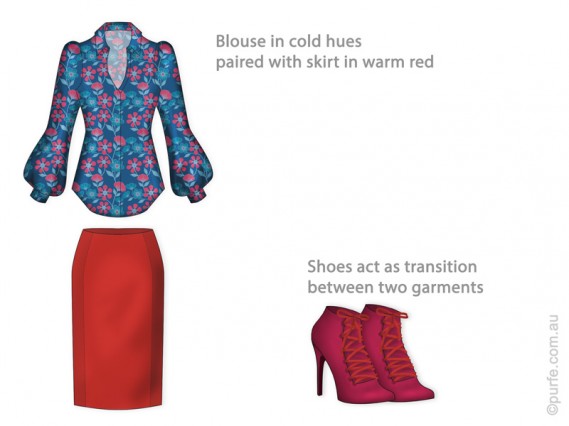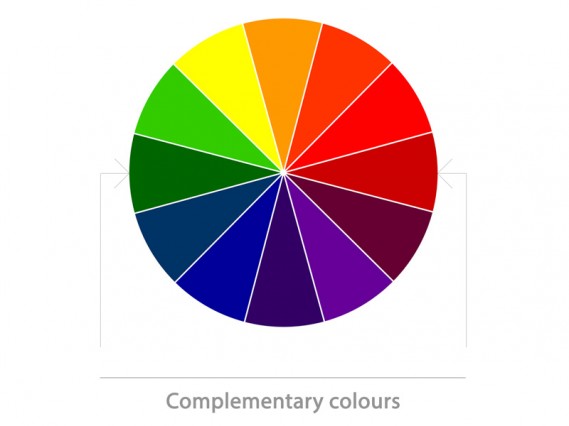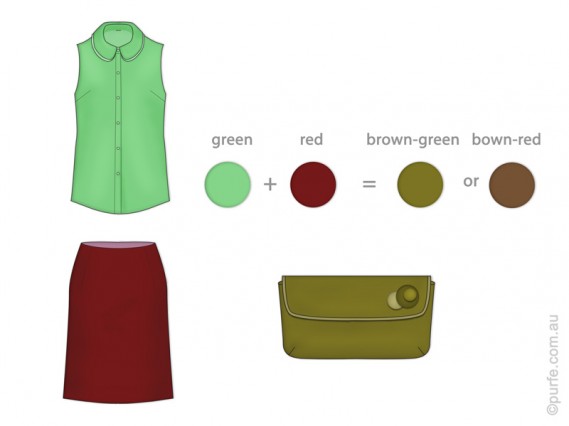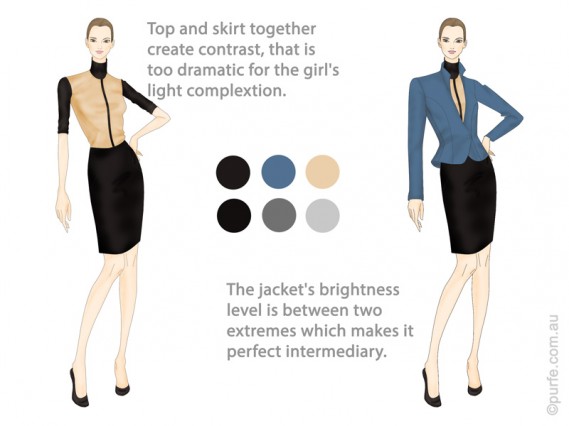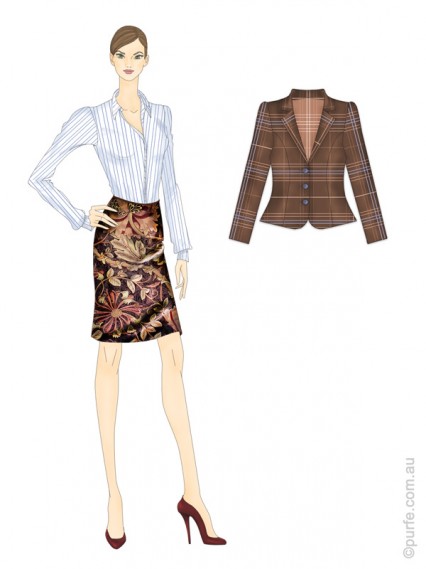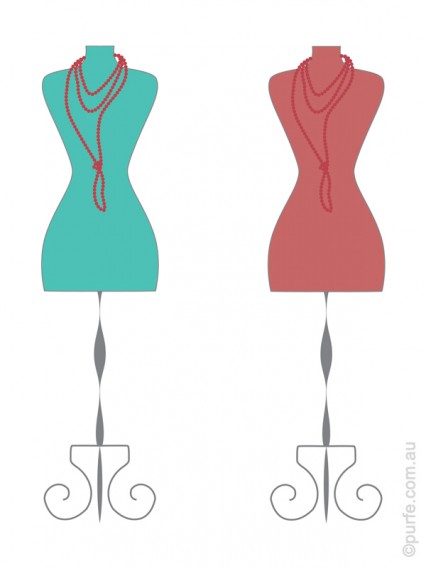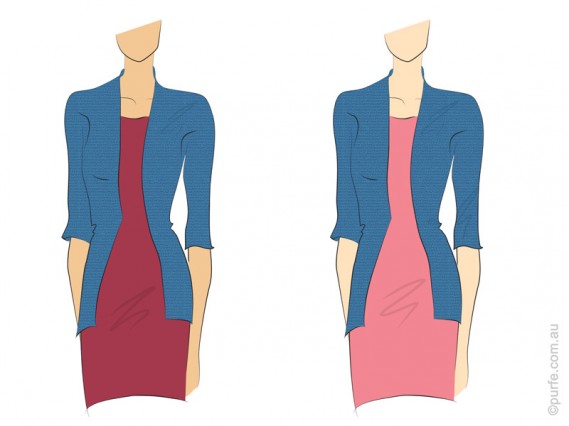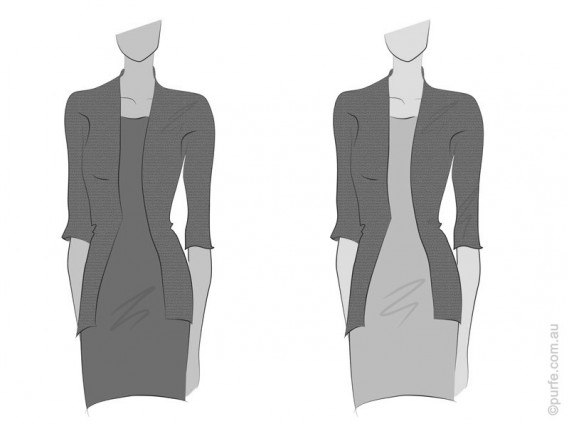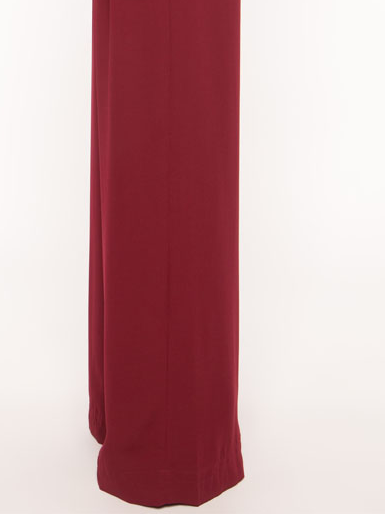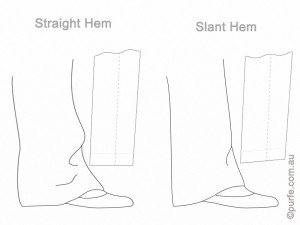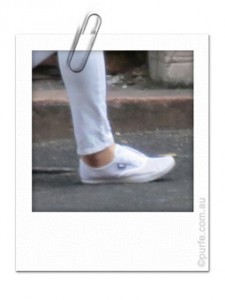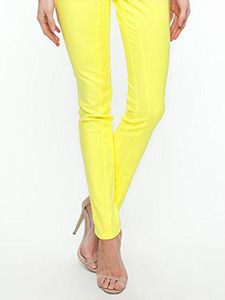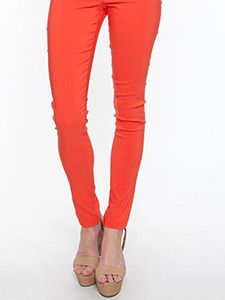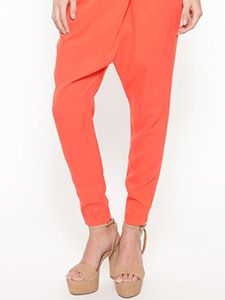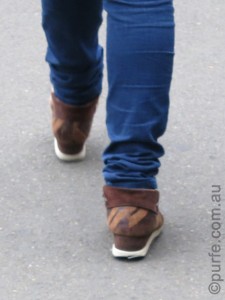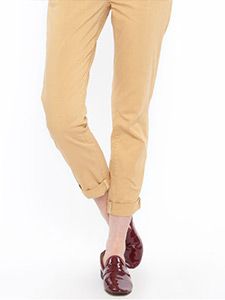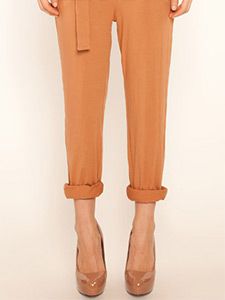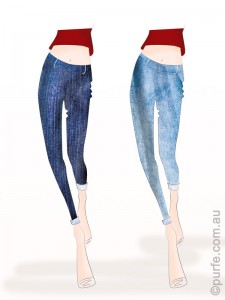Crop tops are not going to lose their ground in the next season. Runways of ready-to-wear Spring 2015 fashion weeks are the best proof of that.
From New York to Tokyo this ultimately popular piece is presented in great variety of cuts from revealing bralets and miniature bandeaus from Moschino and Diesel Black Gold to modest tops from Carolina Herrera.
In this post I summarize the way designers suggest to wear crop tops for the upcoming season.
First, let’s have a look what cuts and styles of crop tops are in trend and also pay attention to colour and prints.
Colour and cut
Trend 1. Keep it simple and modest.
Plain colours and clean cut – are keywords for styling crop tops.
Look for box shaped tops either with short, ¾ sleeves or sleeveless. Colours: white, black, pastels, rich jewellery or deep earthy tones.
On the picture below flats of catwalk models can give you a hint what to look for. There are also some similar models from selected retailers just to illustrate the idea.
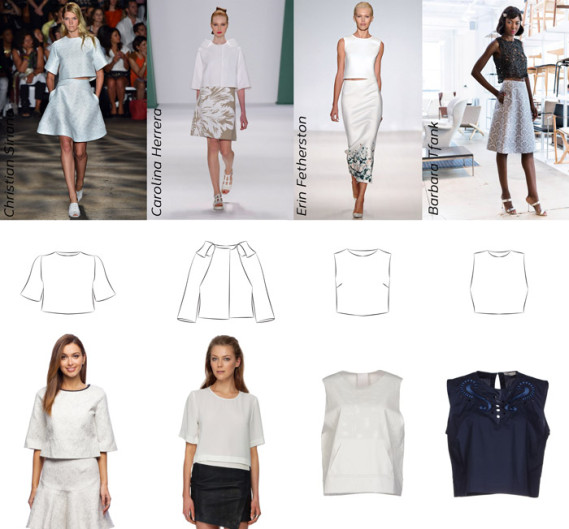
Trend 2. For those who prefer more skimpy clothing and convinced that crop tops are made for revealing not hiding buzz words are cut outs and bralets.
By the way, despite of apparent simplisity bralets possess more intricate cut than crop tops. Darts and reliefs here are used far beyond utilitarian reasons and make statement on their own. It is fascinating how intricate the cut could became with 3D modelling and advanced manufacturing technologies.
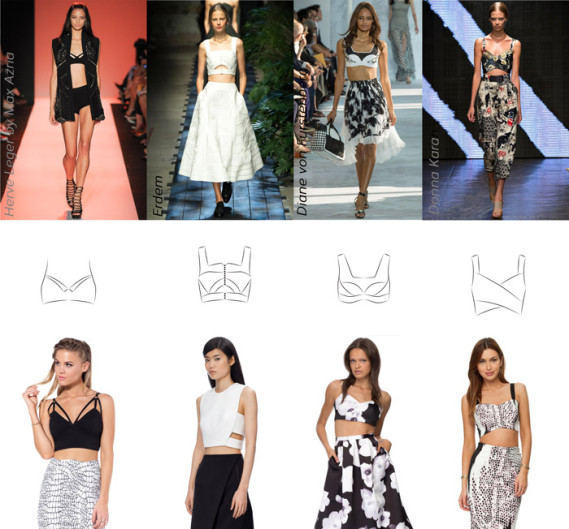
Trend 3. In between of extremes of two said trends lies more subtle approach – transparency. Sheer fabrics and laces neither hide nor reveal giving full play to the sartorial manoeuvres.
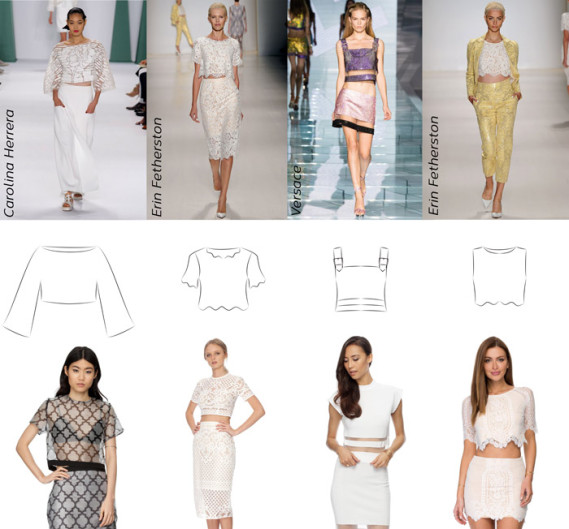
Well, we have sorted out what kind of crop tops are in trend now and finally came to the main question – How to wear them in the upcoming season?
Though ready-to-wear catwalks had shown crop tops with quite variety of bottoms, skirts are far more often the choice rather than, say, shorts or pants.
Crop tops with skirts
Waist line. Natural or high waist line.
Length. Popular lengths are mini, over and under the knee and maxi.
Style. A-line, pencil skirt, flared, pleated. The last two generally teamed with fitted tops to balance proportions.
Crop tops with pants
Waist line. For pants waist line rise is more democratic and varies from low through natural to high waist line.
Length. Length of pants for crop tops depends greatly on cut and silhouette. It could be ankle, 7/8 or full length.
Style. Culottes, tapered, flared, straight.
Here it is the quintessence of the above.
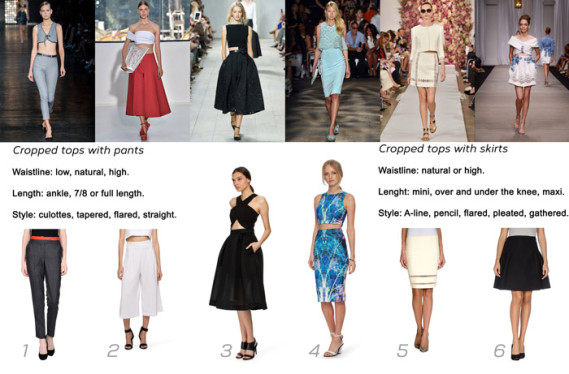
It is all coming together now, isn’t it? Surprising or not, but there a logic in what retalers are stocking up for the next season and with a little breakdown world of fashion is not that random any more.
For the complete collection of crop tops from Spring 2015 Ready-to-Wear shows check my Pinterest board
You may also like to read about:
Basic Principles of an Outfit Layout: Focal Point
Connecting Dots. The Importance of Intermediary in an Outfit

